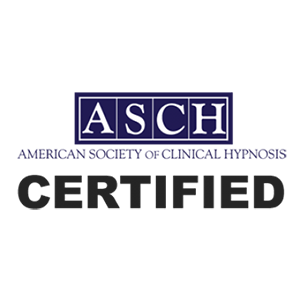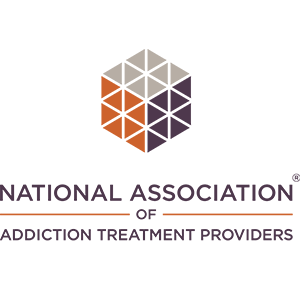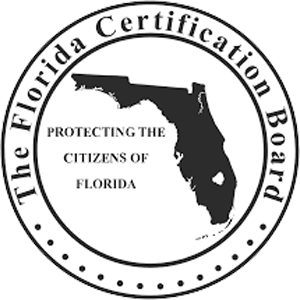Fire Extinguisher Model
The Relapse Prevention Model for Addiction
and Compulsive Disorders
Fire
Extinguisher
Model
The Relapse Prevention
Model for Addiction and
Compulsive Disorders
In my 30 years of working with addiction in various levels of care and treatment modalities, I have seen clients who continually relapse even after numerous treatment attempts, and continually fail to maintain their sobriety. It just seemed that there was something that caused this to happen repeatedly. This predicament motivated me to find a Relapse Prevention Technique that could solve this problem.
This perpetual pattern of relapse that occurred even with all the client’s most sincere and committed efforts. Treatment program after program, support group meetings, 12-step programs, smart recovery, psychotherapy and psychiatry, avoiding negative relationships and environments, and complete immersion into religion and spirituality, they were still plagued by relapse.
When I see one of these clients in treatment, I am compelled to ask, “Why don’t you run the treatment program, because you know a lot more about staying sober than I do!“ They can help everyone else to stay sober, but cannot seem to help themselves.
With all their sincere and committed efforts, they relapse time and time again, resulting in extreme feelings of frustration, defeat, demoralization, and the belief that recovery from addiction is just not possible for them. In addition, their feelings of guilt and shame become so overwhelming, that it fuels continuation of their addiction. Was there a Relapse Prevention Technique that I could I find or create to effectively eradicate this frustrating and inexplicable dilemma?
This is when I began my research to uncover the psychological, emotional, and behavioral factors that were at the core of the problem. That is when I discovered the relapse process and mechanism which drives and perpetuates addiction and was able to develop the “Fire Extinguisher “ Relapse Prevention Technique.
Then, after seeing a stage hypnosis show in Las Vegas, I realized that the factor that goes beyond their recovery knowledge, determination, and support existed in their memory of the rewarding experiences of their substance use. I was then able to identify the two primary motives driving addiction, which were the memories of pleasurable experiences or the relief from painful experiences (emotional, psychological, or physical).
These are experiences and memories that became permanently recorded and stored in their subconscious mind. These memories and subsequent attachments and associations were at the core of the problem. I also deduced that the reason there is no cure for the disease of addiction is because the memory of these rewarding experiences recorded in the subconscious mind can never be erased.
However, I also realized that the negative and painful emotional experiences and memories that motivated them to stay sober, are also stored deeply in the mind. Therefore, the memories of the emotionally painful experiences which motivate recovery are as equally accessible as the negative ones.
The main problem is that these memories can be externally or internally triggered or arise spontaneously. When that happens, they become an exclusive dominant thought that converts to magnified desires so powerful, that it is almost impossible to resist the impulse to relapse.
My conclusion was that these powerful emotional desires are why clients succumb to relapse. It also verified my hypothesis that intelligence and will power are no match for addiction.
This syndrome can easily compare to other incurable life-threatening diseases such as diabetes, heart disease, as well as any other compulsive behavior, and explains why it is so hard to abstain from harmful habits and behaviors. As a matter of fact, we are all subject to strong unhealthy desires to one extent or the other!
Addictive and compulsive behaviors that destroy health and relationships, do not make sense, do they? However, this is the nature of addiction, and it is a natural conclusion that anyone, with help, can realize how illogical this condition is.
It is obvious that addictive behavior is not rational, but a manifestation of a diseased out of control mind, where impulsivity overwhelms intelligence and will power.
With this understanding, I developed a technique called the Fire Extinguisher©, that can interrupt and neutralize this impulse, and empower the client to resist and avoid relapse.
By utilizing the factors that I identified in the addiction cycle, I designed this relapse prevention-based tool on experience and emotional validation. This technique, when applied during a potential relapse episode, reduces and neutralizes emotional cravings, desires, and impulses, and restores the client’s capacity to make logical and rational decisions. When utilized effectively, the desire to avoid the pain and suffering overrules the desire to succumb to the cravings that cause relapse.
“The Fire Extinguisher†technique is best described clinically as the “Experiential Decision Making – Consequential Feeling “model of relapse prevention.
This technique combines the elements of an existential theory approach with reality and cognitive-behavioral therapy, motivational interviewing, and positive association, metaphor, and hypnotic suggestion. The systematic application of the “Fire Extinguisher†process works to overcome the desire for pleasure or relief with a stronger desire to avoid the pain and suffering. Reinforced by visual images and neurolinguistic (NLP) phrasing and slogans, it is easily learned and applied by the client.
Some examples of the NLP slogans are: “Using the Fire Extinguisher technique is like fighting fire with fire “, “When the fire of desire gets higher and higher, use your Fire Extinguisher to put out the fire “, “Don’t get burned again …. Use your Fire Extinguisher. “ These phrases and images are overtly and subliminally inserted in the presentation of the technique and can also be strongly reinforced by hypnosis.
By utilizing the “Fire Extinguisherâ€, the rational decision-making process is restored, and the logical decision to resist the impulse to relapse becomes a “no brainer.†Following this step, the client is advised to “Call the Fire Department†which consists of his/her entire collection of relapse prevention tools learned with me in therapy and relapse prevention group.
Therefore, the “Fire Department†represents calling support group members, going to meetings, distraction, exercise, prayer and meditation, or any other strategy that will reinforce and fortify the decision to stay sober and continue in recovery.
For the past 10 years, I have taught this technique to hundreds of clients who verbalized that the “Fire Extinguisher†has been their most effective relapse prevention tool and often expressed that is has saved their life.
Over the past 5 years, I have diligently worked to design and perfect this technique, and have developed an approved 3 CEU presentation for all mental and behavioral health professionals who work with substance abuse and other compulsive disorders. Recently, due to the COVID-19 Pandemic, I am offering a Relapse Prevention Teletherapy group for clients struggling to maintain their sobriety which contains the “Fire Extinguisher†technique as the central theme of training.
If you have any questions, please contact me and I will be happy to provide any additional information, as well as the opportunity to learn this technique to present to your clients or use for your own benefit.
Empower your Clients to Succeed in Recovery!
For additional information, please contact Brad Haber at (954) 261-5901
Proud To Be Associated With:












